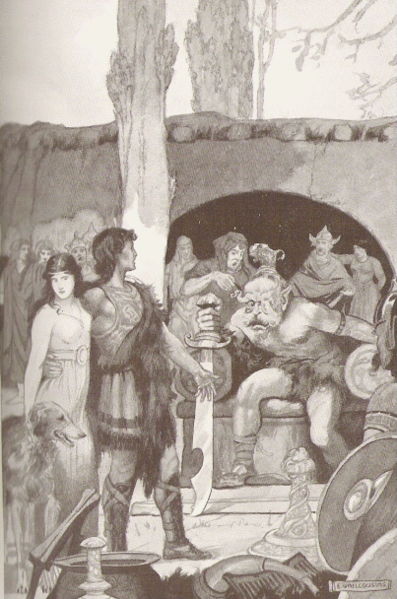
Culhwch & Olwen
I haven’t been posting much here recently, largely due to all the numerous projects I’ve been engaged with. I was working on a novel last year and thinking to myself that I really hoped to get it done soon because the thing I really wanted to work on was “Wizards of Wales,” an adaptation of Welsh myths looking at various wizards and enchanters. Then I realized “why I am I working on a book I’m not interested in when I could be focusing on the one I am interested in?” Thus I switched over from Guardian of the Garden City to Wizards of Wales. Then while researching for that book, I got really interested in the Welsh version of King Arthur, which has surprisingly little influence on later King Arthur retellings. Even stories that claim to be about the “real” King Arthur are more interested in simply moving the events of Le Morte d’Arthur into a more historical time period (Mists of Avalon) or adapting Geoffrey of Monmouth or other early pseudo-historical Arthurian works but ignoring the actual Welsh stuff (Mary Stewart’s Crystal Caves series).
This is a real shame, as the original Welsh stuff is fascinating. Its champions possess bizarre powers and strange personalities, fighting giants and monsters in mysterious quests. In Culhwch & Olwen, the only original Welsh Arthurian story to survive in its entirety, Arthur’s court includes various demigods, such as Manawyddan ap Llyr (of the Mabinogi), Gwyn ap Nudd (king of the fairies), and Morvran (son of the goddess-witch Ceridwen), as well as figures with such a range of powers as superspeed, superstrength, flight, fire-generation, and lips so long that the top lip can be curled back and worn like a hat. It feels less like a court of medieval knights and more as a more bizarre version of the Argonauts of Greek myths or the Avengers. It is crazy and awesome, full of magic and passion — truly the folktales of the Welsh people’s most famous folkhero, rather than Norman-style knights in armour.
Trying to piece together all the old Welsh stories and fragments, combining them together into a coherent narrative, has been a really fascinating experience, and resulted in what was originally going to be one book on Welsh myths splitting into two: Wizards of Wales and Arthur, King of the Brythons. It’s something I’ll be exploring further in this blog, looking at aspects of King Arthur that sadly are rarely explored.
